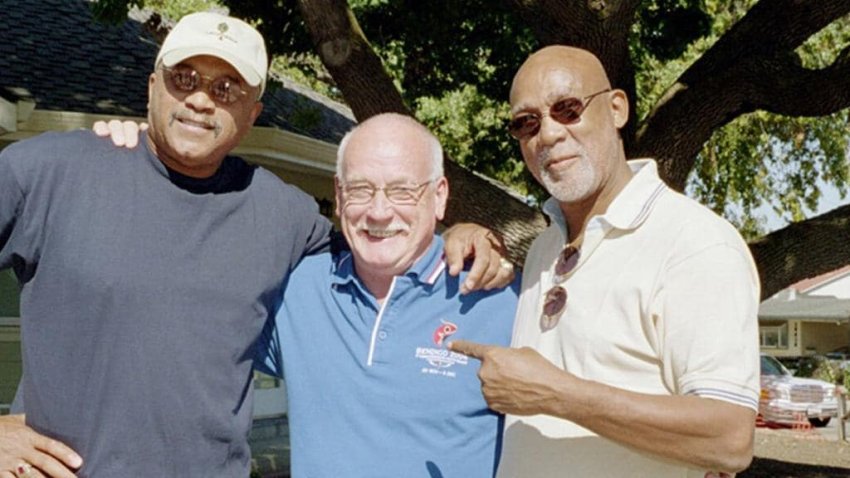
The Peter Norman Story
Written by Andrew Webster & Matt Norman
Macmillan, 2018
$34.99
Australian sprinter Peter Norman had just run a blistering 20.6 seconds in the men’s 200-metre final at the 1968 Mexico City Olympic Games to claim the silver medal. After he heard about the plans of the gold and bronze medallists, African-American runners Tommy Smith and John Carlos, to protest against racism in the US, Norman agreed to support their actions by wearing an Olympic Project for Human Rights (OPHR) badge, stating: “I'll stand with you”.
In The Peter Norman Story, his nephew Matt Norman, who also directed the 2008 film Salute, recounts the odyssey of a working-class Salvation Army-raised man who became an icon for racial equality, yet remained an enigma to those who knew him.
After being inspired by the exploits of athletes such as Soviet runner Vladimir Kuts and Australians Betty Cuthbert, Shirley Strickland, Marlene Mathews and Hector Hogan at the 1956 Melbourne Olympics, Norman competed for the Collingwood Harriers club by the end of the year. By 1962, Norman’s rise as sprinter had been so meteoric that he had been selected to represent Australia at the 1962 Perth Commonwealth games.
During this time, Norman, whose faith formally forbid him competing on Sundays since it was the day of Sabbath, found a way around this problem by competing while wearing gear with Christian messages such as “Jesus Saves” and “God is love”.
However, his Christianity didn’t prevent Norman from trash-talking opponents before races. This was one of Norman’s many contradictions that would become much more apparent after the 1968 Olympics.
Meanwhile, Norman continued to compete for state and national titles, representing Australia in the 1966 Commonwealth Games in Kingston, Jamaica, claiming a bronze medal as part of the Australian 4x110 yard men’s team. Prior to the 1966 Commonwealth Games, the Australian made a detour to the LA Coliseum to compete against the world’s best athletes, including Tommy Smith and John Carlos, with whom Norman’s fate would intertwine in 1968.
The October 1968 Mexico City Olympic Games took place in the midst of worldwide political upheaval, with the Vietnam War provoking protests around the world. In the US, the civil rights movement demanded equal rights for African-Americans, while in Australia, that movement inspired the Aboriginal land rights movement. Australia was also criticised for the way it treated Aboriginal people and the racist White Australia policy.
On October 2, 10 days out from the opening ceremony of the games, more than 10,000 people flooded the Plaza de las Tres Culturas in Mexico City to protest against the US-backed Mexican government's corruption. They protested their government’s expenditure of US$150 million on the games while so many people lived in poverty.
The protests were repressed, with the authorities opening fire into the crowd. Rows of people were mowed down or beaten and dragged away. It was later revealed that more than 400 people were killed.
Norman was well-informed about all these developments, following them in the papers. Due to his Christian upbringing, Norman could not understand racism or narrow-mindedness, stating: “I always had my views on racial tolerance. I couldn’t see why anyone would dislike or hate someone simply because they were a different colour. It wasn't a matter of colour. You liked someone because you liked them.”
It was this idea that inspired him to take his stand on the medal podium with Smith and Carlos.
This stand would cost Norman greatly with Australia’s sporting authorities failing to select him for the 1972 Munich Olympics. In the Australian Athletics championships 100 metre final, Norman was awarded second place by the judges despite everyone else agreeing that he had won.
Whether it was a conspiracy to exclude Norman, or the quite plausible scenario of administrative incompetence, Norman missed out on selection.
During the 2000 Olympics, the Australian Olympic committee failed to invite Norman to the games. A consistent theme that emerged was the contrast in the way Norman was viewed in the US compared to Australia. In fact, it would be the US Olympic Committee who invited Norman as their guest to attend the games.
Carlos and Smith would suffer far worse fates for their stand, but Norman's support resulted in them considering him their brother. They served as pallbearers at Norman’s funeral after his death from a heart attack in 2006.
With the fame that followed the Mexico City games, Norman began to chafe at the restrictiveness of his Salvationist upbringing, and his later life was plagued by alcoholism. Furthermore, with the failure of personal relationships, his life took a slow downward spiral after his racing days.
Despite his flaws and contradictions, it is important to recognise the stand against racism that Norman took in 1968 and beyond. It took until 2012 for the Australian government to recognise and apologise for the treatment accorded to Norman after 1968.
The Peter Norman story is a unique story about an unsung hero who should inspire other people to take a stand against racism.